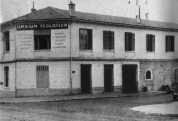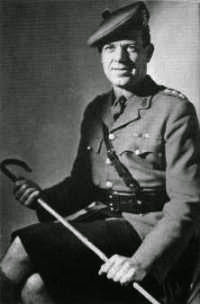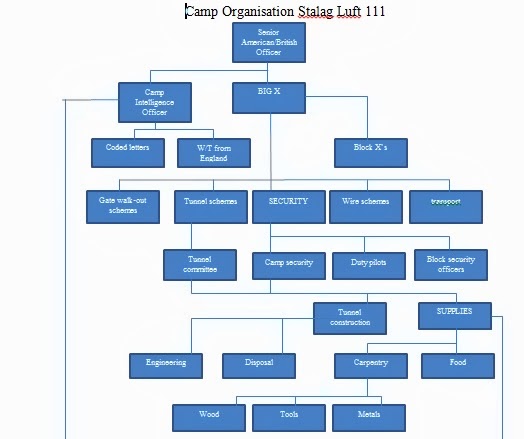 |
| Rev Donald Caskie |
The Reverend Donald Caskie and the Seamen's Mission
The Reverend Donald Caskie had been Minister of a Scottish
Kirk in Paris, since leaving St Andrews Gretna in 1935 and was well known there
for expressing anti-Nazi sentiments from the pulpit. In May 1940 he made hasty
preparations to leave his church. France lay on the verge of capitulation and
the British Expeditionary Force was in ruins on the beaches of Dunkirk. After
making one last visit to the aged members of his congregation who could not
escape with him, Caskie joined the columns of refugees and personnel travelling
south away from the advancing German Army. It was a slow and dangerous journey
with the haphazard columns being exposed to regular attack by Stuka dive
bombers and shelling. France was slipping to defeat and the French government
relocated to Bordeaux on 10 June to avoid capture. In the chaos of war Caskie
found himself amongst a diverse band of humanity including:
Civilian refugees
French, Polish, Belgian and Dutch troops who had avoided
capture in their own battles against the Nazis.
Convicts who had escaped from bombed prisons or been left
behind when the guards deserted before the arrival of the enemy.
Frenchmen trying to stay one step ahead of the invader by
avoiding the inevitable German forced labour drafts to mines, factories and
farms
Men and women who knew they would be on the Nazis Wanted
list.
Jews desperate to escape the Occupied and Vichy Zones of
France.
British troops separated from their units during the mass
retreat to Dunkirk.
Each harboured their own threads of hope, ranging from
climbing the Pyrenees into neutral Spain or getting a boat out of Marseille, to
making for North Africa, the Middle East or the Americas.
Caskie eventually arrived in the densely populated back
streets of Marseille, before the French-German Armistice had been signed. The
place was disorganised, politically in limbo and a world away from the life around
escape and evasion which would develop as the war progressed. The unfolding
Marseille situation would be key in forming the shape of escape and evasion in
the town and the very earliest seeds of the Pat O’Leary Escape line.
The old port was a cosmopolitan place with different quarters
and cultures from its international trade. Displaced British servicemen had arrived
there by hitching on trains and trekking south across country. The remnants of
the British Expeditionary Force were trickling in for months after Dunkirk. Men
without documents or ration cards, struggling into the town weary and hungry. The
early arrivals still found refreshment at the main railway station Gare St
Charles, where a government funded canteen operated for a while, being manned continuously
by Red Cross volunteers.
 |
| Marseille 1939 |
Some servicemen had obtained second hand civilian clothes on
their journey and walked the streets, relying on charity and hiding at night to
sleep rough. It was a difficult time because anti-British feeling ran high in
some quarters. The evacuation at Dunkirk had gone ahead and the French felt
betrayed by the British. In the days before the Armistice whilst France was
still fighting, the radio and press news were fortunately unreliable which
added to the confusion, making it easier for the soldiers to be absorbed into the
Marseille back streets.
Apart from the humanitarian angle of aiding the soldiers,
Caskie spotted amongst the chaos that with increasing numbers of men arriving with
no one to feed or organise them, it would be only a matter of time before the French
surrender came and they would be picked up, imprisoned or sent to POW camps
under the new regime.
He mustered support from the experienced Mr Dean a British
Consul in Nice and approached the local police to see what could be done about
the problem of the number of stranded British ‘nationals.’ (Although the
Armistice had been signed by this time, British
civilian nationals were
still allowed to leave France.) The local police were in the very early stages
of trying to cope with a new Vichy government, plus the Malice (paramilitary
body of Fascist Frenchmen.) The traditional Gendarme had already been relegated
to more menial work such as traffic duties/ minor offences and they faced a
totally different style of policing. Unsure of their ground, the police referred
Caskie to the Special Branch who with similar difficulties tried to sidestep
the issue by offering to arrange his passage home. He refused as there was important
work to be done.
It was therefore carefully suggested by the authorities that
Caskie might wish to reopen the old Seamen’s Mission building in Marseille at
46, Rue de Forbin. This was on the proviso that his activities would be watched
closely, no military personnel would be hiding there and he could expect raids
on the premises with no prior warning.
 |
| Seamens Mission Marseille - C Long |
Caskie took up the challenge and when he arrived to take
possession of the Mission, three sailors were already waiting outside. The word
must already have spread via the underground networks of town and the American
Consul who under international law had taken on responsibility for British
affairs after the Armistice.
The sailors helped him put up a notice above his door ‘NOW
OPEN TO BRITISH CIVILIANS AND SEAMEN ONLY’ and the Mission was operational by
mid-July 1940. The priest hired beds and blankets with what money he possessed
and simply opened the place up, welcoming his visitors in a straightforward
Christian way. Those who were fit enough he set to work helping to clean the
rest of the building, the men received care and food and also had visits from a
Doctor (Rodachani see later). Caskie managed to obtain English reading
material, packs of cards, dart boards and even billiard tables. It soon became
a destination for evaders, initially in civilian clothes, then others began arriving
still in their uniform.
By the time Caskie was operational, the old fort of Saint Jean
in Marseille had been utilised by the Vichy administration as a temporary
prison to hold officers and men from all three British services. Officers were
allowed out ‘on parole’ and providing they returned to the fort weekly when
ration cards were issued, they were free to move around outside the
prison.
Consequently it was common to
see commissioned ranks in uniform walking around the town, and many lodged
there, selling or negotiating deals with their ration cards as food was scarce.
 |
| Fort Saint Jean - J P Dalbera |
The fort was not designed as a prison and escape attempts soon
began. In the town, Captain Freddie Fitch (working with Lt William Sillar )
had already taken charge of escape and evasion matters there. He was active in
organising and getting men across the Pyrenees to Spain where they could make
for Gibraltar. Details around Caskie’s initial involvement in any escape operation
(ad hoc or otherwise) are sketchy and most of the source material comes from
Caskie himself. In the author’s view, there must have been some early contact
between him and Fitch, either directly or indirectly through third parties in
order for the evaders in the Mission to be able to move on with some sort of
plan after their stay.
The Mission was an ideal place to the fugitives. It had a tough
construction with robust fittings and good washing facilities. The need for the
occupants inside to reduce movement and camouflage any sound became
unnecessary, the frequent use of the lavatory/pulling of bath plugs was not a problem
as in many safe houses. There was no need to conceal the increase in refuse
either. The big difficulties were:
Security of the Mission - Best Described as Low
Little attempt seems to have been made externally to conceal
activities. When a knock at the door came, Caskie would check up and down the
street and usher the callers in.
Obtaining Civilian Clothes and Documentation for Evaders
These were acquired from various sources including the Arab
quarter of Marseille, British civilians and other locals. The effect of the new
Vichy authority was being felt already, raising pro-British sympathies again
amongst some areas of the population. Caskie’s role as a priest also appealed
to charitable instincts. He tried to keep a bank of surplus clothes in the
Mission, hiding them under piles of coal in the basement.
The American Consul acting under international law became
responsible for dealing with British affairs after the Armistice. Replacing
‘lost’ identity documents was one of his duties.
Hiding Evaders Who Were Still in Uniform and Without Appropriate
Documentation
Evaders in uniform and with no appropriate documentation
were briefed where to hide in the Mission should a visit or raid by the
authorities occur. A series of concealed places existed, under floorboards,
behind cleverly disguised doors or alcoves/false walls , all of which could be
made available immediately.
Lack of Food
There were constant shortages and most evaders had no ration
cards. Those who did, went to food queues. Caskie went out at 4.00am daily. He
gradually built up a good relationship with the Greek and Cypriot merchants of
the Vieux port.
Disposal of Uniforms
The uniforms were parcelled and weighted, then taken out at
night to the docks area and carefully lowered into the deeper water where the
ship came and went. This created more wash and movement.
The Vichy Observations of Arrivals and Departures and the
Raids
The French authorities were watching the mission and
initially appeared to do nothing. They began to carry out regular raids most mornings
around 6.00am and it has been suggested that if further unscheduled searches were
to take place, the Mission often knew in advance. As time went on the operation
tightened, but one theory was that the French were convinced because of the blatantly
obvious nature of the operation that it was a cover for something much bigger,
so they held off, as the raids never produced anything.
 |
| Captain Ian Garrow |
In October 1940 Captain Ian Garrow a ‘South African born
Scotsman’ arrived at the Saint Jean fort. He had been a POW at Monferran-Savès
near L'Isle-Jourdain and was soon on parole in Marseille building up his own experience
and contacts. When Captain Fitch made his own move for Spain in December 1940,
a good framework for escape and evasion was in already in place with Captains
Leslie Wilkins, Charles Murchie and Ian Garrow continuing the work. These men began
to work with a Canadian civilian Tom Kenny and a number of local Marseille
residents including Louis Nouveau and Dr Georges Rodocanachi (visited the
Mission to treat the men staying there) who operated their own safe houses. Donald Caskie had built up a liaison with
these players and continued his vital role of running the Mission until his
eventual arrest in April 1942.
Sources
Safe Houses Are Dangerous - Helen Long
Thanks to Keith Janes for information and a fresh look on Garrow, Fitch and the early days etc. For a full account and recommended reading visit:
http://www.conscript-heroes.com/Art50-Ian-Garrow-960.html
©Keith Morley











